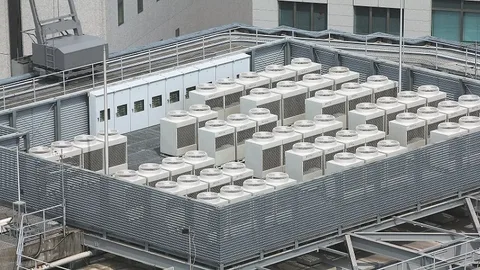How EVs and Data Centers Are Driving the US Thermal Management Market

Introduction
The US thermal management market is witnessing steady growth driven by the increasing need to control heat in electronic devices, automotive systems, and industrial machinery. As industries move toward higher efficiency and miniaturization, effective heat dissipation has become critical for ensuring system reliability and longevity. The rise in electric vehicles (EVs), renewable energy systems, and high-performance computing applications has created strong demand for advanced cooling technologies, materials, and systems across the United States.
Market Drivers
The growing adoption of electric vehicles is one of the leading drivers of the US thermal management market. EV batteries, power electronics, and charging systems require precise temperature control to maintain safety and performance. In addition, the expansion of data centers and cloud computing infrastructure is boosting the demand for efficient thermal management solutions to prevent overheating and reduce energy consumption. Technological advancements such as phase-change materials, liquid cooling systems, and thermoelectric coolers are gaining traction due to their higher efficiency and compact design. Government incentives promoting energy-efficient technologies are further supporting market growth.
Market Challenges
High manufacturing and material costs remain a significant challenge for widespread adoption of advanced thermal management systems. Integrating these systems into existing infrastructure requires complex engineering and customization, which increases operational expenses. Furthermore, the need for constant innovation to match rapidly advancing electronics and EV technologies puts pressure on manufacturers to develop more compact, reliable, and cost-effective solutions. Environmental regulations regarding coolant materials and disposal also pose compliance challenges for market players.
Market Opportunities
The US thermal management market offers substantial opportunities in sectors such as automotive electrification, renewable energy, and consumer electronics. The increasing shift toward 5G communication networks and high-performance computing is creating new avenues for liquid cooling and advanced heat sink technologies. Moreover, the integration of AI and IoT into thermal management systems allows predictive maintenance and optimized performance monitoring. Companies investing in sustainable materials, recyclable components, and energy-efficient systems are well-positioned to gain a competitive advantage in the evolving market.
Regional Insights
North America, particularly the United States, leads in thermal management innovation, driven by strong R&D investments and robust manufacturing capabilities. States like California, Texas, and Michigan are major hubs due to their concentration of automotive, semiconductor, and technology industries. The presence of global players such as Honeywell, 3M, and Parker Hannifin contributes to the rapid development and commercialization of cutting-edge cooling solutions. Increasing collaborations between technology startups and established manufacturers are also accelerating innovation in high-efficiency thermal management systems.
Future Outlook
The US thermal management market is expected to grow significantly as industries continue to prioritize energy efficiency, miniaturization, and digitalization. The increasing focus on EV battery safety, data center optimization, and smart manufacturing will drive sustained demand for advanced cooling technologies. Innovations in nanomaterials, graphene-based cooling, and liquid immersion systems will shape the next generation of thermal management solutions. Over the next decade, integration with AI and digital twins will enable real-time heat mapping and adaptive cooling, marking a new phase of intelligent thermal control systems.
Conclusion
The US thermal management market is on a transformative path, powered by rapid technological evolution and growing emphasis on sustainability. As industries shift toward electrification and digitalization, the role of efficient heat control systems will become increasingly critical. With ongoing advancements in materials science, fluid dynamics, and automation, thermal management solutions are poised to enhance system reliability, energy efficiency, and environmental performance across diverse applications.
- Art
- Causes
- Crafts
- Dance
- Drinks
- Film
- Fitness
- Food
- الألعاب
- Gardening
- Health
- الرئيسية
- Literature
- Music
- Networking
- أخرى
- Party
- Religion
- Shopping
- Sports
- Theater
- Wellness



